Last Updated on October 13, 2022 by Tech Queries Team
When you go to a computer market, you will find several types of monitors for building a PC. A Monitor is one of the most essential components of the computer because you will be looking at it all day and night. There are 11 Things you need to consider before buying Computer Monitor. Therefore, we have provided a Computer Monitor Buying Guide that will help you make a quick and easy decision.
Most users simply buy the Monitor recommended by the shopkeeper or someone else. However, some users want to get the best product suitable for their workability. Every user is different and has different requirements. Even the best Monitor can be useless for some users, and the least-selling Monitor can be best suited for some users.
Hence, by reading this Computer Monitor Buying Guide, you will get enough knowledge to choose the Best Monitor Suitable for you.
You can also check out our other buying guides like,
Table of Contents
Monitor Buying Guide – 11 Things to Consider:
1. Monitor Size:
First, let’s start with the size of the Monitor. Basically, Monitors are found in the range of 18 to 49 inches. Note, we are not talking about televisions here. TVs can be found in larger sizes as well. But, this article is about computer monitors.
Check out the Difference Between TV Vs Monitor.
The most commonly used computer monitor sizes are 19.5″, 22″, 23.5″, 24″, and 27″. If you are a gamer, then 27″ monitors would provide a better gaming experience. For office use, 22″-24″ monitors would be sufficient. You can tile multiple windows for multitasking. However, home users who use the computer for basic activities can go for a 19.5″ monitor.
But again, it depends on the budget as well. A large screen is always better, but a large screen also means more expensive.
- Built-in Speakers: Perfectly suited to work & gaming settings, built-in speakers deliver robust & smooth audio while saving space on your desk.
- 99% sRGB Color Gamut: With 99% sRGB, this monitor offers a wider color gamut than most conventional monitors, giving deeper colors and defining features.
- IPS Panel: The IPS (In-Plane Switching) panel cannot be beat when it comes to consistently delivering top color performance & sharp visibility from multiple viewing angles.
- up to 75Hz Refresh Rate: With 75Hz refresh rate, images change faster and smoother than the standard, reducing screen tearing
- Multiple Ports: Two HDMI ports and one VGA port provide up to 75HZ refresh rate, refining picture clarity in all action-packed gaming sequences and graphic design projects. Audio In and a Headphone Jack provide diverse audio optio

2. Aspect Ratio:
The screen size of a device is measured diagonally. Therefore, the horizontal and vertical sizes can differ. Hence, the Aspect Ratio is different for Standard Monitors, Wide Monitors, and Super Wide Monitors. 4:3 was the old standard. But, 16:9 is the new standard.
3. Screen Resolution:
Size and Resolution are two different things. Monitors come in different resolutions like HD (720p) Resolution, Full HD (1080p), 4K, etc. We have a detailed article on Types of Screen Resolution. But, to explain to you in short, more resolution means better picture quality.
If you have a 720p monitor, you won’t feel any difference between 720p and 1080p videos or games. Because the screen is only capable of showing you in HD (720p) resolution. You can play it, but you won’t find any difference.
Gamers should choose the screen resolution based on their CPU and GPU. Let me explain in detail. Suppose you bought a 4K monitor. And let’s say your computer hardware is only capable of running games in 720p. Then you will see pixelated graphics, which will spoil your gaming experience. Therefore, if your hardware is powerful enough to run games in 4K at 60 FPS (Frames Per Second), go for a larger screen with 4K resolution. If not, 720p (HD) and 1080p (Full HD) are a decent choice.
The above example is also suited for other users. If you are planning to watch movies in 4K, then a 720p resolution screen won’t do any justice. Similarly, if you bought a 4K monitor, but you play movies in 720p, it won’t give you the best experience.
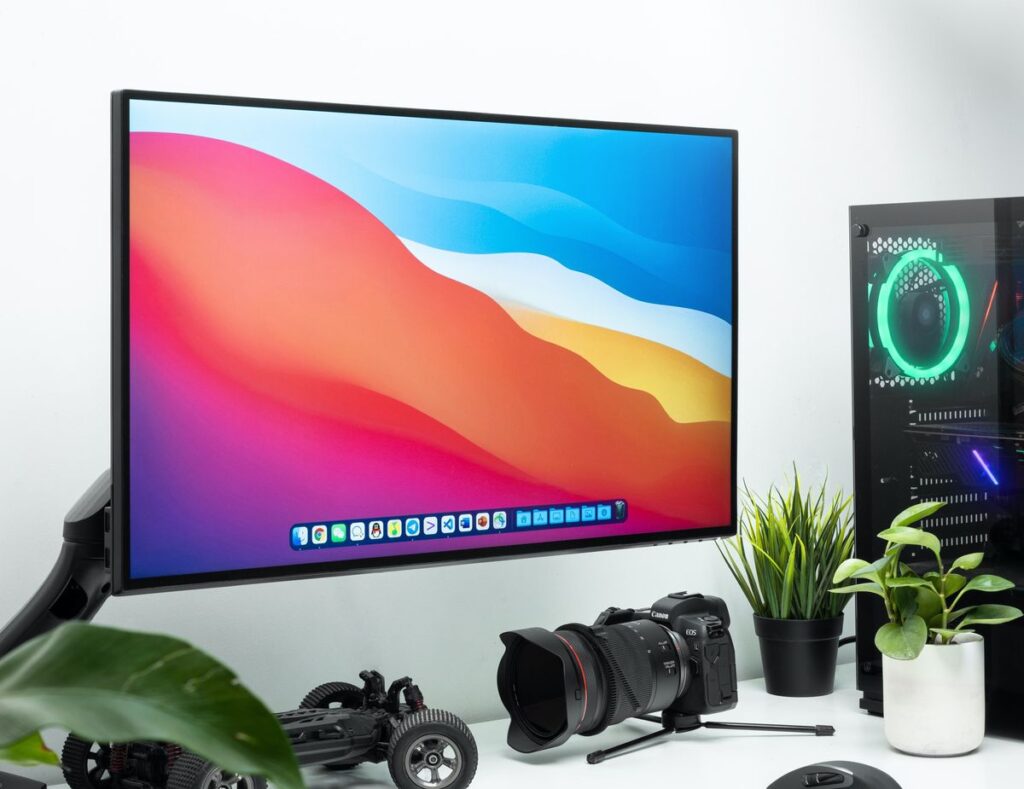
Screen Size and Screen Resolution affect one another. You need to always choose a higher resolution when compared to the screen size. For example, if you are buying a 24″ Monitor, it should have at least 1080p (Full HD) Resolution. For 27″ Monitors, I would suggest getting 2K (Ultra HD) Resolution.
Therefore, you can read our detailed article on Screen Resolution and make the best decision based on your usability.
4. Design:
Most users buy Monitors based on their look and design, though it does not affect the performance. Some users prefer simple-looking Monitors, while most gamers always choose a fancy monitor.
- Decide whether you want a flat or curved monitor. It has nothing to do with the performance but looks good while playing games and watching movies.
- Check the specs to see the material and build quality of the Monitor. Popular brands always have better build quality.
- Some users prefer slim monitors, so check the specs and product images for the Monitor width.
- If you want to mount the Monitor to the wall, check if it has a wall mounting feature.
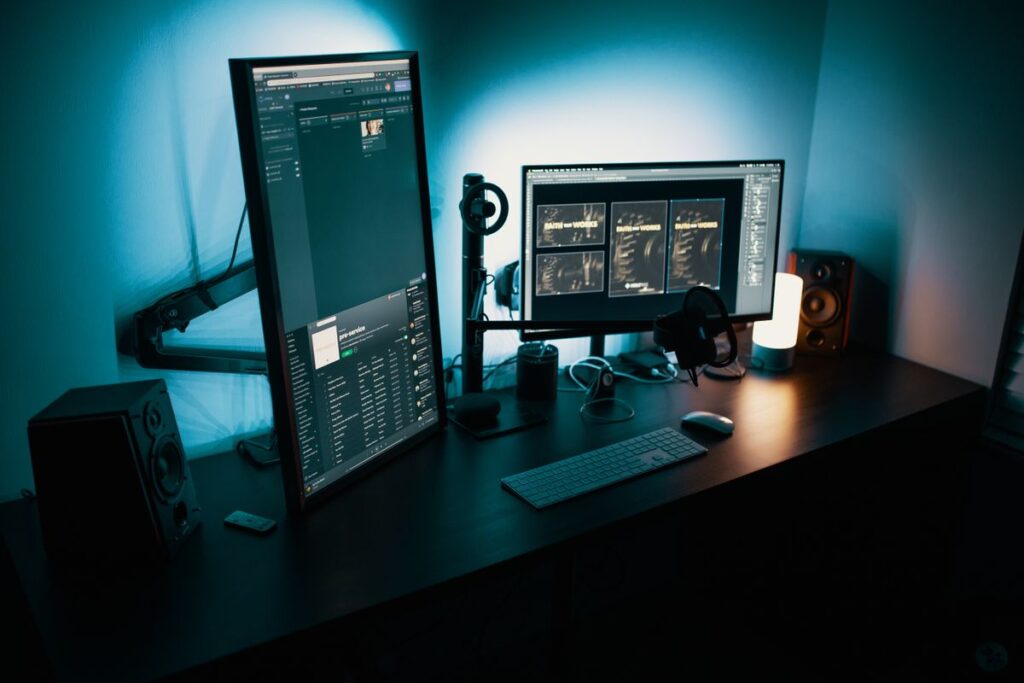
- Moreover, see if the Monitor stand sits well on the surface you use. You can also look for fancy stands.
- Adjustment. It is one of the most important features, yet most users ignore or forget it. Check the specs if you can increase & decrease the height of the Monitor. You need the Adjustment feature to set the Monitor correctly to avoid neck and back pains.
- Furthermore, some Monitors come with advanced functionality that allows you to tilt and rotate the display.
- 27-inch AGON gaming monitor with 2560x1440 Quad HD resolution designed by world-renowned Porsche Design.
- 1000R curved VA panel matches the curvature of the human eye and wraps around your vision, putting you at the center of the action for a highly immersive gaming experience
- Adaptive-Sync enabled optimizes performance for hyper-responsive, ultra-smooth competitive gameplay without tearing.
- Light up your battlefield with customizable AOC Light FX and turn your workspace into a showcase with Porsche Design or AGON logo projection.
- Instantly switch gears between game modes using the wireless Quickswitch Keypad to optimize visuals and adjust AOC Shadow Control settings to improve your gaming experience.
- RE-SPAWNED Warranty: 4-year Zero-Bright-Dot, 4-year Advance Replacement, 1-year (One-Time) Accidental Damage
- 2x DisplayPort 1.4, 2x HDMI 2.0, 1x USB Type-B (Upstream), 4x USB Type-A (Downstream), 1x Audio-in/out, 1x Microphone-in, 1x Microphone-out, and Built-in 2x5W DTS speakers
- Height-adjustable stand with swivel and tilt for optimum ergonomics and viewing comfort during extended gaming sessio
5. Display Technology or Screen Panel Type:
It is the most important thing to consider before buying computer monitor. The display technology determines how good the image looks. We have recently published an article talking in detail about all the Display Technologies like QLED, OLED, LED, LCD, IPS, and more.
In short, the TN LCD panel is best suited for low-budget gamers as it provides better response time and faster refresh rates. However, the picture quality is not so good. A better alternative for TN LCD Monitors is IPS LCD Monitors.
IPS are a little bit expensive than TN monitors but provide better image quality like contrast, brightness, and viewing angles.
One downside of IPS Monitors is that some Monitors suffer from IPS Glow (Also known as Backlight Bleed).
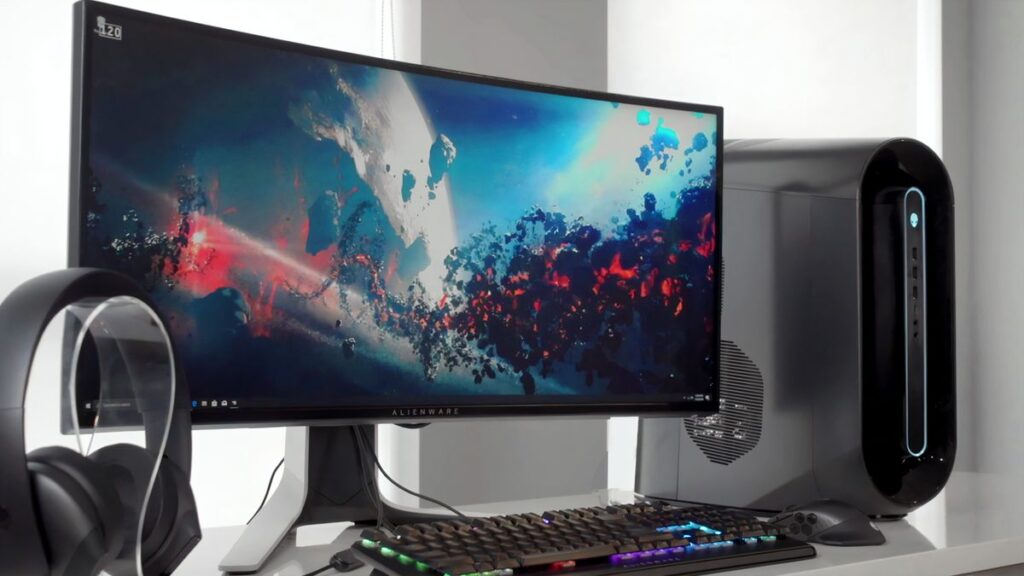
VA Panels are better than TN but not as good as IPS. However, they have better refresh rates than IPS panels.
LED Monitors also use TN, IPS, and VA panels. So, even if you choose a LED Monitor, you should check which Screen Panel it uses. According to us, IPS is the best screen panel for both LCD and LED monitors.
OLED is a new display technology, which is mostly used in TVs. Monitors are smaller in size when compared to TVs. Therefore, OLED Technology is rarely used. However, there are few OLED Monitors available in the market, which are quite expensive.
- 48” UHD 4K (3840 x 2160) OLED Display - Meet the next-level of gaming thanks to an ultra-large 48” monitor, for a game-changing, immersive experience.
- 1.5M : 1 Contrast Ratio & DCI-P3 99% (Typ.) with HDR 10 - With a 1,500,000:1 contrast ratio, gamers will experience games the way the creators intended with bold colors.
- 0.1ms (GtG) Response time - Enjoy the game with smoother movement, and surreal visual fluidity, with 0.1ms (GtG) response time that reduces reverse ghosting, and helps objects render clearly.
- HDMI 2.1 and VRR - Enjoy smoother, vivid colors and high-resolution graphics thanks to HDMI 2.1, which provides 2.5x higher bandwidth than HDMI 2.0. With HDMI 2.1 and a supportable graphics card, you can experience up to 120Hz (O/C 138Hz) variable refresh rate (VRR). You can also transfer uncompressed 4K files at speeds up to 120Hz and uncompressed 8K files at speeds up to 30Hz.
- NVIDIA G-SYNC Compatible - Get In The Game Officially validated by NVIDIA as G-SYNC Compatible**. That translates to faster, smoother gaming thats been tested to reduce screen tearing and stutter. Never miss a frame of the action as you clinch your victories.
- AMD FreeSync Premium - AMD FreeSync Premium is built in. AMD FreeSync Premium equips serious gamers with a fluid, virtually tear-free gaming experience. With at least 120hz refresh rate at minimum FHD resolution and low latency gameplay, youll never miss a frame of the action as you play at peak performance.
- DTS Headphone:X - DTS Headphone:X provides accurate spatialization and localization in games for 3D audio over headphones. Supports channel-based, scene based, and object-based audio.
- UltraGear Remote Control - With the UltraGear Remote Control, you can turn your monitor on or off, adjust sound, change the mode and more.
- Anti-Glare & Low Reflection - Stay focused on the game without worrying about missing enemy movements from light reflectio
6. Refresh Rate:
To understand in detail, you must study our recent article on What is Refresh Rate (Hz)?. However, all you need to understand is, the more refresh rate, the better it is. Refresh Rate is mostly important for gamers, as the monitor shall have a higher refresh rate for providing them the best gaming experience.
If you don’t want to do a longer study on Refresh Rates, let me help you out. A Monitor with 60 Hz refresh rates is a good choice. 75 Hz Monitors are a bit expensive but also a better choice. Some gamers with no budget limit like to purchase 144 Hz Monitors.
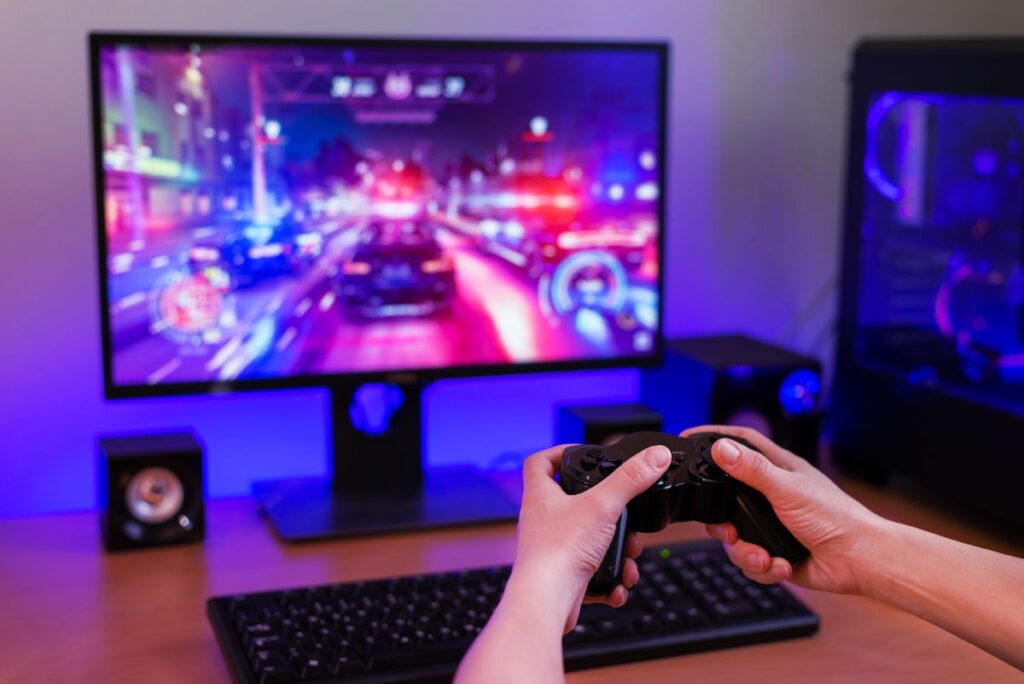
7. G-Sync & Free Sync:
G-Sync and FreeSync Technologies are the latest addition in monitors that helps provide better smoothness and tear-free immersion. This technology is useful for Gamers, as the Monitor tries to sync the gaming FPS with Monitors Refresh Rate.
The G-Sync technology is better suited for NVidia Graphic Cards, while The FreeSync Tech is suitable for all types of Graphic Cards and is comparatively cheaper.
8. Response Time:
Response Time is the time taken by a Pixel to change and is measured in ms (millisecond). Again, this feature is also important for Gamers. Having a longer response time results in motion blur (also known as Ghosting) when the objects are moving faster.
As we have discussed above in this Computer Monitor Buying Guide, TN panels have a faster response time. Response Time is mentioned in the product’s specifications. It is ideal for most users if the Response Rate of the monitor is under 10 ms. However, Gamers can get as lowest as possible.
9. HDR Enabled Monitors:
Some Monitors have a built-in HDR feature that improves the image quality and colors while watching movies, browsing images, and playing games. It would cost more, but if your budget is high, it would be a great addition.
10. Connectivity:
Of all the things I mentioned in this Computer Monitor Buying Guide, this is the most important. No matter what the screen size, resolution, or panel is, no matter if it has better refresh rates or response time. IF you cannot connect your computer to the Monitor there is no use of all those things.
Your CPU cabinet has different types of connectivity ports on the back. But, your Monitor must have the same connectivity ports, or you won’t be able to connect both. Old Monitors and Graphics cards used to have VGA ports. But, the latest Graphics Cards don’t have any VGA ports. It contains HDMI and Display Port.
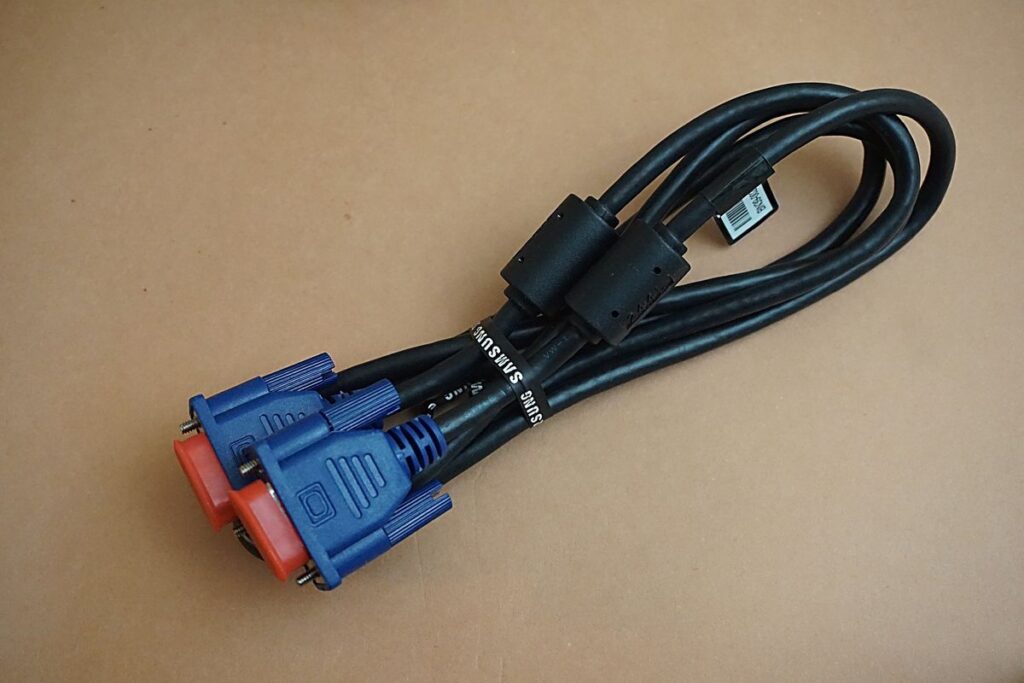
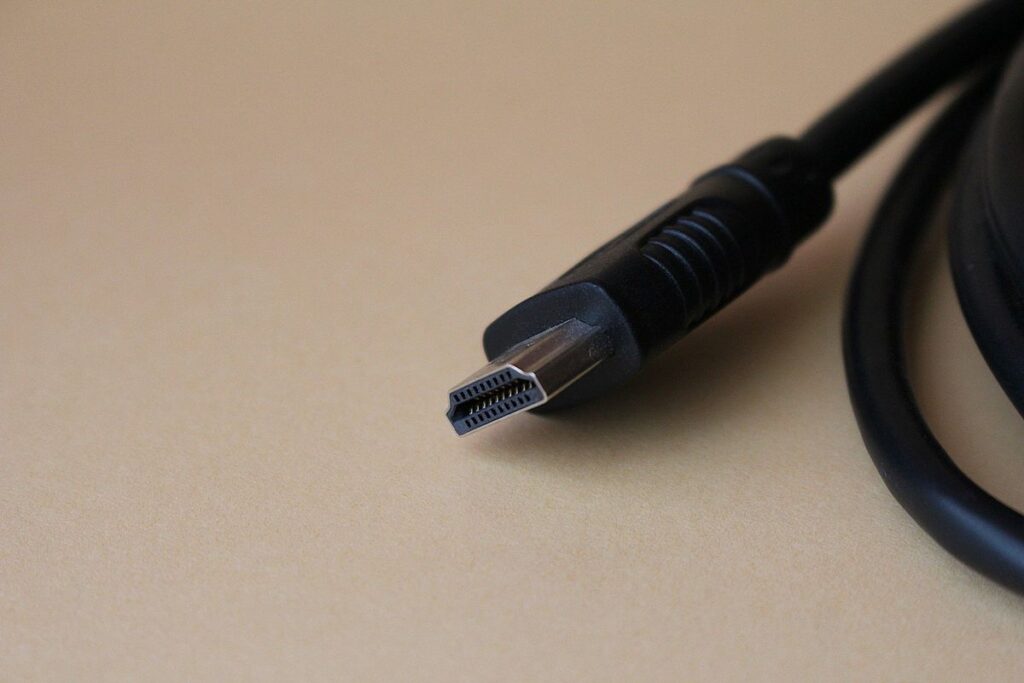
On the other hand, you might have an old Graphics Card with only a VGA port, but the latest Monitors doesn’t come with a VGA port. Therefore, whatever the case is, make sure you can connect your Monitor with the CPU.
HDMI is the standard connectivity type used these days. However, in the future, you will also come across various connectivity types like Type-C, mini HDMI, mini Display Port, and more.
If you have all the options, connecting your Monitor with Display Port will give you better performance.
Also, don’t panic if you don’t have the required connectivity option. There are several connectivity adapters available online and in local shops, like VGA to HDMI adapter, VGA to Display Port, etc. However, using adapters may not provide the same picture quality. Therefore, use these adapters only if necessary.
11. Eye-Care:
Other computer experts may think this feature is not worth talking about. But, for me, it is an important feature as well. No matter what type of user you are, it is necessary to protect your eyes as well. The latest Monitors are built with Eye-Care or Eye-Protection feature that protects your eyes to an extent.
The technology filters blue light, which will reduce eye fatigue and irritation. That means you can sit longer in front of the PC without damaging your eyes. Whether you are a student doing academic work, or an Engineer working from home, or a Teacher taking online classes, or a Gamer steaming for long hours, or an Employee working at night, this feature is a must for you.
- 27-inch Full HD (1920 x 1080) LED backlight display with IPS 178° wide viewing angle panel
- Up to 75Hz refresh rate with AMD Sync technology to eliminate tracing and ensure crisp and clear video playback
- Color Augmentation mode allow users with color vision deficiency to better distinguish between different colors
- Rest Reminder users from eye fatigue and help users manage screen time
- TÜV Rheinland-certified and Low Blue Light technologies to ensure a comfortable viewing experience
- Robust Connectivity with HDMI (v1.4) and VGA ports
- What’s in the box: HDMI cable, L-shaped screwdriver, Power Cord, Warranty card, Quick Start Gu
Conclusion on Monitor Buying Guide:
Selecting the Monitor for your computer can be overwhelming. There are so many things you need to consider, like size, resolution, refresh rate, panel type, and more. You may not find all the qualities you are looking for in a single Monitor. Even if it has, it would be very expensive. Therefore, choose the one that has the most qualities.
I currently use BenQ 24″ Monitor bought from Amazon. The best thing I like about this Monitor is the Eye-Care feature. I work for long hours writing long articles in daylight and at night. The Eye-Care feature does not hurt my eyes as much as my old Monitor did. It also has a 24″ screen that helps me use multiple windows tiled. Therefore, choose the Monitor that best suits you.
- Work Productively and Comfortably: 24 Inch IPS 1080P FHD Computer Monitor featuring an edge-to-edge display that allows you to focus on the important work. Work, play, and learn all in one place!
- Proprietary Eye-Care Tech: Our exclusive Eye-Care technology reduces eye fatigue for optimal comfort, productivity and allows you to work for an extended period of time.
- Adaptive Brightness for Image Quality: Our Brightness Intelligence (B.I.) technology optimizes display performance for work and play to protect your vision while providing a stunning image at the same time.
- Ultra-Slim Bezel: Ultra-slim bezel allows for an extended view while the space saving base and elegant design is perfect for any home office.
- Seamless Connectivity: Easily access content via HDMI, DP and VGA ports.
- Built-In Speakers: Free up desk space with a built-in sound system that delivers premium audio.
- Invisible Cable Management: Easily hide all wires inside the monitor stand for a clean and sleek lo
By reading this Computer Monitor Buying Guide 2023, you will be able to understand Monitors better and make a good choice. You can also help others by sharing this article with them. So, what are the things you will consider while buying a gaming monitor or casual Monitor? Let us know by leaving a comment below.

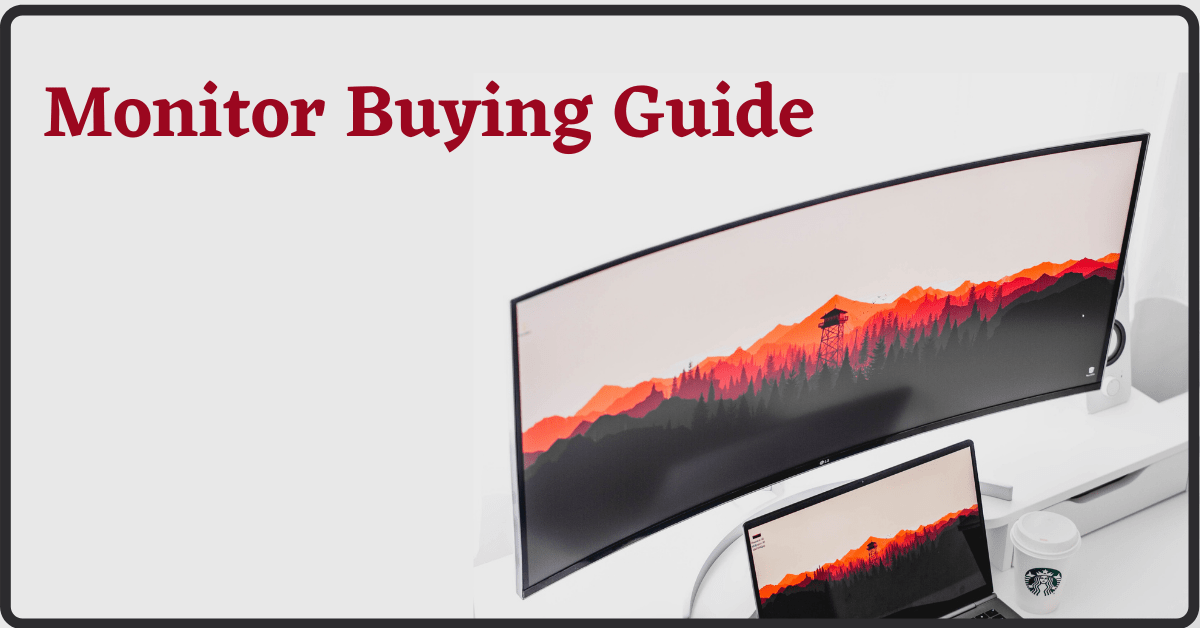





2 thoughts on “Computer Monitor Buying Guide 2023 – 11 Things to consider”